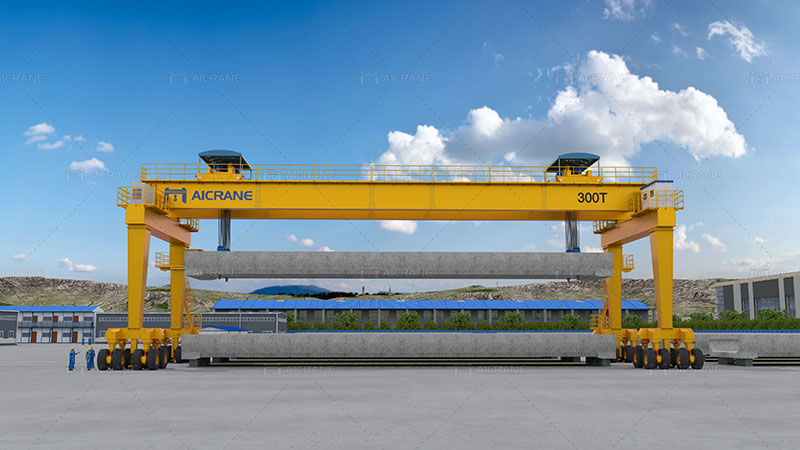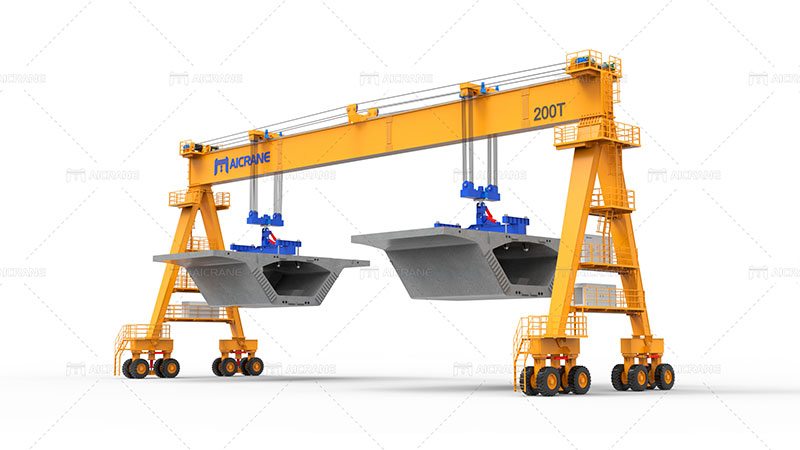In the realm of modern industrial operations, efficiency, precision, and cost-effectiveness are vital. To meet these demands, businesses across various sectors have turned to innovative solutions, and one such solution is the Rubber Tyred Gantry (RTG) crane. These specialized cranes have transformed the way materials are handled and stored, offering a versatile and efficient solution for industries such as shipping, logistics, and manufacturing. In this article, we delve into the compelling reasons why investing in a Rubber Tyred Gantry crane is a wise decision for modern material handling.
What is a Rubber Tyred Gantry Crane?
A Rubber Tyred Gantry (RTG) crane is a mobile, heavy-duty lifting machine commonly used in material handling and container handling operations. As the name suggests, the crane is equipped with rubber tires, allowing it to move efficiently on the ground without the need for fixed tracks or rails. Rubber tyred gantry cranes for sale are typically used in container terminals, intermodal yards, and industrial facilities where they are responsible for lifting, moving, and stacking containers or other heavy loads with precision and speed.

Investing in an RTG Crane
Versatility and Mobility
One of the key advantages of an RTG crane is its mobility and versatility. Unlike traditional gantry cranes that are confined to fixed tracks or rails, RTG cranes can move freely on rubber tires. This mobility allows them to cover a larger operational area, making them well-suited for facilities with frequently changing layouts or where flexibility in material handling is required.
RTG cranes can travel in any direction, rotate 360 degrees, and navigate tight spaces with ease. This adaptability is a significant advantage in industrial settings where space is at a premium, as it allows for efficient use of the available area.
Precise and Efficient Handling
RTG cranes are known for their precise and efficient material handling capabilities. They can lift, move, and stack containers or heavy loads with exceptional accuracy, reducing the risk of damage to cargo. This level of precision is crucial in industries where the safe handling of valuable or sensitive goods is paramount.
The flexibility and control offered by RTG cranes contribute to efficient operations. They can pick up and transport containers swiftly, ensuring that cargo moves seamlessly through various stages of the supply chain. The ability to stack containers in rows and tiers maximizes the use of storage space in container terminals, improving overall efficiency and cost-effectiveness.
Reduced Labor Dependency
The adoption of RTG cranes in material handling significantly reduces the need for manual labor. Traditional container handling methods often require a substantial workforce to move and stack containers, which can be both labor-intensive and costly. RTG cranes, on the other hand, are operated by a smaller crew and can efficiently manage container handling tasks. This not only lowers labor costs but also enhances safety, as it reduces the risk of accidents related to manual cargo handling.
Space Optimization
RTG cranes are designed to make the most of available space. Their ability to stack containers efficiently, both in rows and tiers, maximizes the utilization of container yards and storage facilities. This space optimization is particularly crucial in container terminals, where land usage directly affects operational efficiency and profitability.
The efficient use of space not only reduces the need for additional land or storage areas but also minimizes the congestion within the facility. This leads to smoother operations, fewer delays, and a reduction in container handling time.
Cost Efficiency
Investing in an RTG crane generally results in cost savings over time. The ability to handle materials quickly and accurately reduces operational costs, enhances productivity, and minimizes the risk of accidents. This improved efficiency leads to lower labor expenses, reduced maintenance costs, and a quicker turnaround time for container handling operations. Overall, rubber tired gantry cranes contribute to cost-effective material handling processes.

Enhanced Safety
Safety is a top priority in industries that rely on heavy material handling. RTG cranes play a crucial role in creating a safer work environment. By reducing the need for manual labor, they significantly lower the risk of injuries associated with the handling of heavy loads. Additionally, their precision and control help minimize the potential for accidents, such as collisions, dropping of cargo, or structural damage.
Environmental Considerations
Many modern RTG cranes are designed with environmental sustainability in mind. They often incorporate energy-efficient technologies, such as regenerative braking, and meet emission standards, reducing their carbon footprint. The focus on environmental considerations aligns with the growing global concern for sustainability and responsible business practices.
Future-Proofing
Investing in an RTG crane offers businesses a future-proof solution for their material handling needs. These cranes can adapt to changing operational requirements, thanks to their mobility and versatility. They can be easily reconfigured or relocated to accommodate shifting storage and handling demands, ensuring that the investment remains valuable in the long term.
Applications of RTG Cranes
Container Terminals: RTG cranes are widely used in container terminals to handle and stack shipping containers. Their mobility and precision make them ideal for efficiently managing container movements in busy port facilities.
Intermodal Yards: Intermodal facilities that transfer containers between various modes of transportation (e.g., rail, truck, and ship) rely on RTG cranes to facilitate seamless transfers and quick turnaround times.
Industrial Facilities: RTG cranes are employed in manufacturing facilities, warehouses, and distribution centers for various material handling tasks. They are suitable for handling raw materials, finished products, machinery, and more.
Port and Harbor Operations: Beyond container handling, RTG cranes are used for various tasks in port and harbor operations, including loading and unloading bulk cargo and handling heavy machinery.
Conclusion
Investing in a Rubber Tyred Gantry (RTG) crane is a strategic decision for businesses looking to optimize their material handling processes. The versatility, mobility, precision, cost efficiency, and safety offered by RTG cranes make them indispensable in various industries, from shipping and logistics to manufacturing and intermodal transportation. The ability to adapt to changing operational requirements, reduce labor dependency, optimize space usage, and contribute to environmental sustainability demonstrates that RTG cranes are indeed a wise choice for modern material handling. As technology continues to advance, the role of gantry cranes in industrial operations is set to expand further, solidifying their place as essential assets in the world of material handling and logistics.